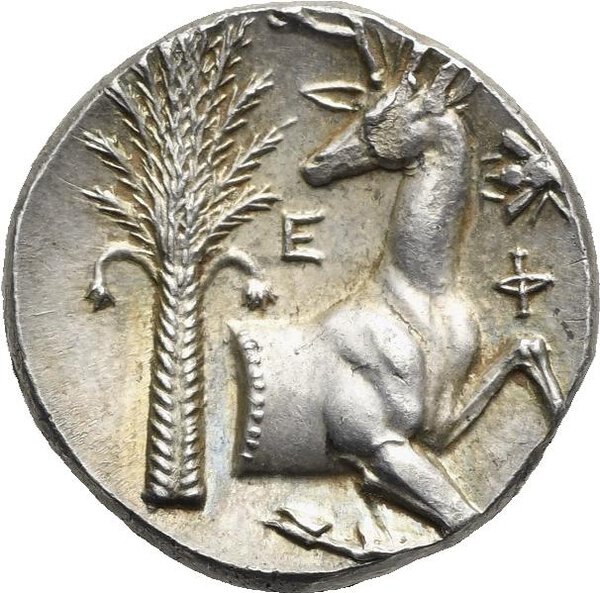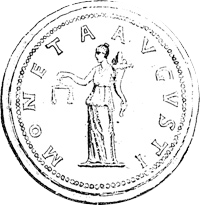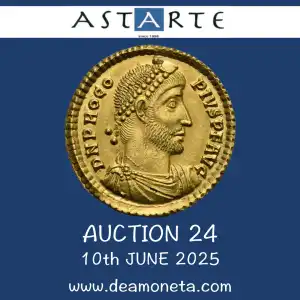





Ionia. Ephesus. Octobol struck under Egesipolis (Magistrate). Circa 340-325 BC (Silver, 17.31 mm, 5.01 g). Draped bust of Artemis right, wearing stephane and with bow and quiver over shoulder. Rev. [ΗΓΗΣΙΠΟΛΙΣ], Forepart of stag kneeling right, head turned left; on left, E and palm tree left; on right, bee above Φ. SNG von Aulock 1841. SNG Kayhan 263. BMC 78 var. (different magistrate). Cf. NAC 120, lot 397 (same dies). Pleasing light toning with underlying iridescent sheen. A portrait of captivating elegance, executed in an exceptional Hellenistic style, unquestionably the most refined of the entire series. Struck on remarkably fresh metal. Minor area of weakness on reverse. Otherwise, Good Extremely Fine.
Ex Bank Leu 18, 5 May 1977, lot 187 (Sfr 6.600).
Ephesos, a major center of Artemis worship in the Greek world, featured powerful symbols on its coinage—most notably the bee, stag, and palm. The bee, originally linked to an Anatolian goddess later identified as Artemis, became so integral to the cult that her priestesses were known as “honey bees.” The stag, sacred to the goddess, symbolized her role as guardian of wildlife, while the palm recalled her mythological birth beneath a palm tree on Delos. Together, these emblems reflect the city's deep religious identity and its unique devotion to Artemis.


